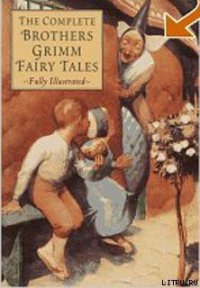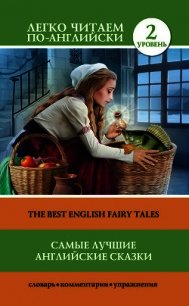Celtic Fairy Tales - Jacobs Joseph (лучшие книги читать онлайн txt) 📗
I. CONNLA AND THE FAIRY MAIDEN.
Source.–From the old Irish “Echtra Condla chaim maic Cuind Chetchathaig” of the Leabhar na h-Uidhre ("Book of the Dun Cow”), which must have been written before 1106, when its scribe Maelmori ("Servant of Mary”) was murdered. The original is given by Windisch in his Irish Grammar, p. 120, also in the Trans. Kilkenny Archaeol. Soc. for 1874. A fragment occurs in a Rawlinson MS., described by Dr. W. Stokes, Tripartite Life, p. xxxvi. I have used the translation of Prof. Zimmer in his Keltische Beitrage, ii. (Zeits. f. deutsches Altertum, Bd. xxxiii. 262-4). Dr. Joyce has a somewhat florid version in, his Old Celtic Romances, from which I have borrowed a touch or two. I have neither extenuated nor added aught but the last sentence of the Fairy Maiden’s last speech. Part of the original is in metrical form, so that the whole is of the cante-fable species which I believe to be the original form of the folk-tale (Cf. Eng. Fairy Tales, notes, p. 240, and infra, p. 257).
Parallels.–Prof. Zimmer’s paper contains three other accounts of the terra repromissionis in the Irish sagas, one of them being the similar adventure of Cormac the nephew of Connla, or Condla Ruad as he should be called. The fairy apple of gold occurs in Cormac Mac Art’s visit to the Brug of Manannan (Nutt’s Holy Grail, 193).
Remarks.–Conn the hundred-fighter had the head-kingship of Ireland 123-157 A.D., according to the Annals of the Four Masters, i. 105. On the day of his birth the five great roads from Tara to all parts of Ireland were completed: one of them from Dublin is still used. Connaught is said to have been named after him, but this is scarcely consonant with Joyce’s identification with Ptolemy’s Nagnatai (Irish Local Names, i. 75). But there can be little doubt of Conn’s existence as a powerful ruler in Ireland in the second century. The historic existence of Connla seems also to be authenticated by the reference to him as Conly, the eldest son of Conn, in the Annals of Clonmacnoise. As Conn was succeeded by his third son, Art Enear, Connla was either slain or disappeared during his father’s lifetime. Under these circumstances it is not unlikely that our legend grew up within the century after Conn–i.e., during the latter half of the second century.
As regards the present form of it, Prof. Zimmer (l.c. 261-2) places it in the seventh century. It has clearly been touched up by a Christian hand who introduced the reference to the day of judgment and to the waning power of the Druids. But nothing turns upon this interpolation, so that it is likely that even the present form of the legend is pre-Christian-i.e. for Ireland, pre-Patrician, before the fifth century.
The tale of Connla is thus the earliest fairy tale of modern Europe. Besides this interest it contains an early account of one of the most characteristic Celtic conceptions, that of the earthly Paradise, the Isle of Youth, Tir-nan-Og. This has impressed itself on the European imagination; in the Arthuriad it is represented by the Vale of Avalon, and as represented in the various Celtic visions of the future life, it forms one of the main sources of Dante’s Divina Commedia. It is possible too, I think, that the Homeric Hesperides and the Fortunate Isles of the ancients had a Celtic origin (as is well known, the early place-names of Europe are predominantly Celtic). I have found, I believe, a reference to the conception in one of the earliest passages in the classics dealing with the Druids. Lucan, in his Pharsalia (i. 450-8), addresses them in these high terms of reverence:
Et vos barbaricos ritus, moremque sinistrum,
Sacrorum, Druidae, positis repetistis ab armis,
Solis nosse Deos et coeli numera vobis
Aut solis nescire datum; nemora alta remotis
Incolitis lucis. Vobis auctoribus umbrae,
Non tacitas Erebi sedes, Ditisque profundi,
Pallida regna petunt: regit idem spiritus artus
Orbe alio: longae, canitis si cognita, vitae
Mors media est.
The passage certainly seems to me to imply a different conception from the ordinary classical views of the life after death, the dark and dismal plains of Erebus peopled with ghosts; and the passage I have italicised would chime in well with the conception of a continuance of youth (idem spiritus) in Tir-nan-Og (orbe alio).
One of the most pathetic, beautiful, and typical scenes in Irish legend is the return of Ossian from Tir-nan-Og, and his interview with St. Patrick. The old faith and the new, the old order of things and that which replaced it, meet in two of the most characteristic products of the Irish imagination (for the Patrick of legend is as much a legendary figure as Oisin himself). Ossian had gone away to Tir-nan-Og with the fairy Niamh under very much the same circumstances as Condla Ruad; time flies in the land of eternal youth, and when Ossian returns, after a year as he thinks, more than three centuries had passed, and St. Patrick had just succeeded in introducing the new faith. The contrast of Past and Present has never been more vividly or beautifully represented.
II. GULEESH.
Source.–From Dr. Douglas Hyde’s Beside the Fire, 104-28, where it is a translation from the same author’s Leabhar Sgeulaighteachta. Dr Hyde got it from one Shamus O’Hart, a gamekeeper of Frenchpark. One is curious to know how far the very beautiful landscapes in the story are due to Dr. Hyde, who confesses to have only taken notes. I have omitted a journey to Rome, paralleled, as Mr. Nutt has pointed out, by the similar one of Michael Scott (Waifs and Strays, i. 46), and not bearing on the main lines of the story. I have also dropped a part of Guleesh’s name: in the original he is “Guleesh na guss dhu,” Guleesh of the black feet, because he never washed them; nothing turns on this in the present form of the story, but one cannot but suspect it was of importance in the original form.
Parallels.–Dr. Hyde refers to two short stories, “Midnight Ride” (to Rome) and “Stolen Bride,” in Lady Wilde’s Ancient Legends. But the closest parallel is given by Miss Maclintock’s Donegal tale of “Jamie Freel and the Young Lady,” reprinted in Mr. Yeats’ Irish Folk and Fairy Tales, 52-9. In the Hibernian Tales, “Mann o’ Malaghan and the Fairies,” as reported by Thackeray in the Irish Sketch-Book, c. xvi., begins like "Guleesh.”
III. FIELD OF BOLIAUNS.
Source.–T. Crofton Croker’s Fairy Legends of the South of Ireland, ed. Wright, pp. 135-9. In the original the gnome is a Cluricaune, but as a friend of Mr. Batten’s has recently heard the tale told of a Lepracaun, I have adopted the better known title.
Remarks.–Lepracaun is from the Irish leith bhrogan, the one-shoemaker (cf. brogue), according to Dr. Hyde. He is generally seen (and to this day, too) working at a single shoe, cf. Croker’s story “Little Shoe,” l.c. pp. 142-4. According to a writer in the Revue Celtique, i. 256, the true etymology is luchor pan, “little man.” Dr. Joyce also gives the same etymology in Irish Names and Places, i. 183, where he mentions several places named after them.


